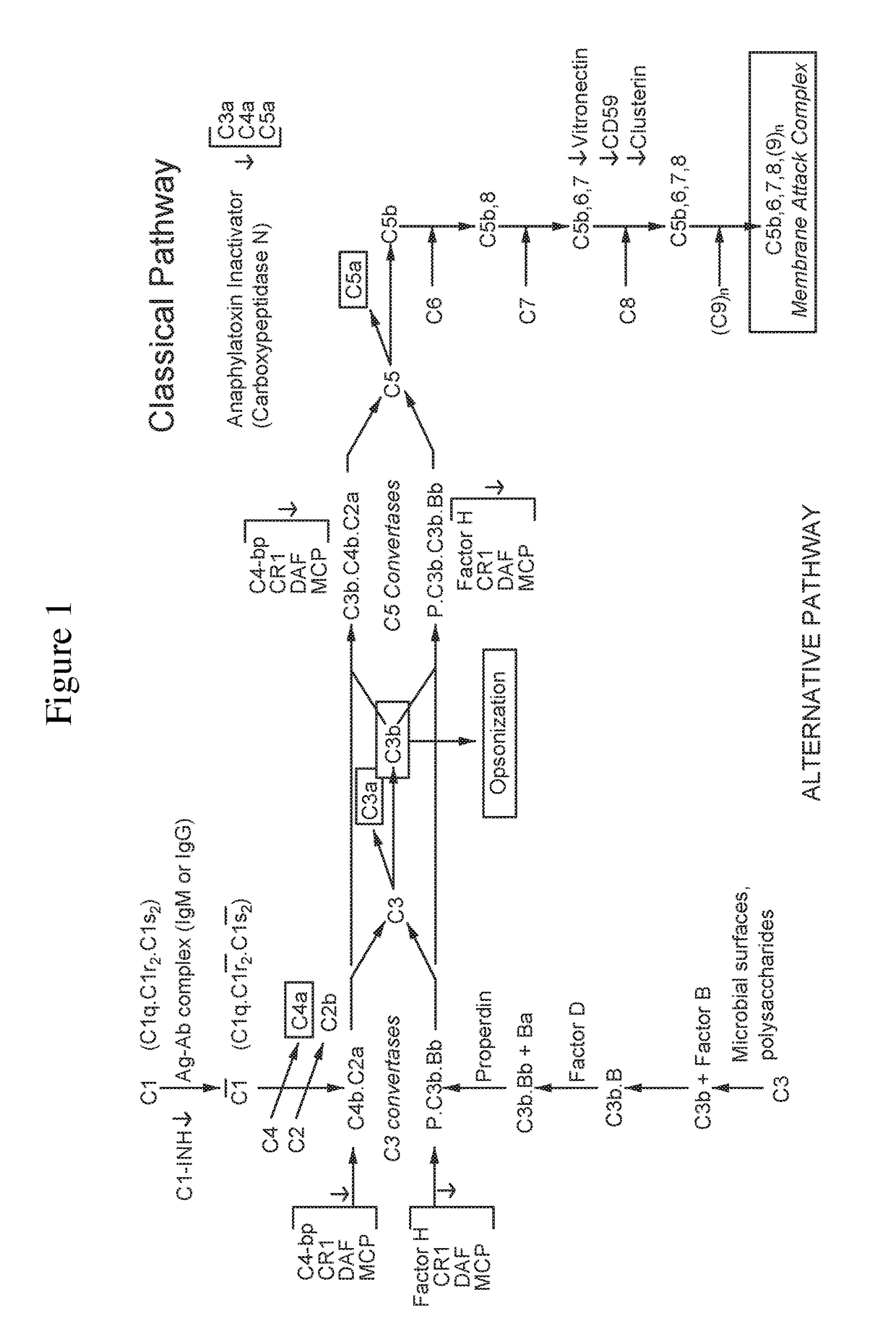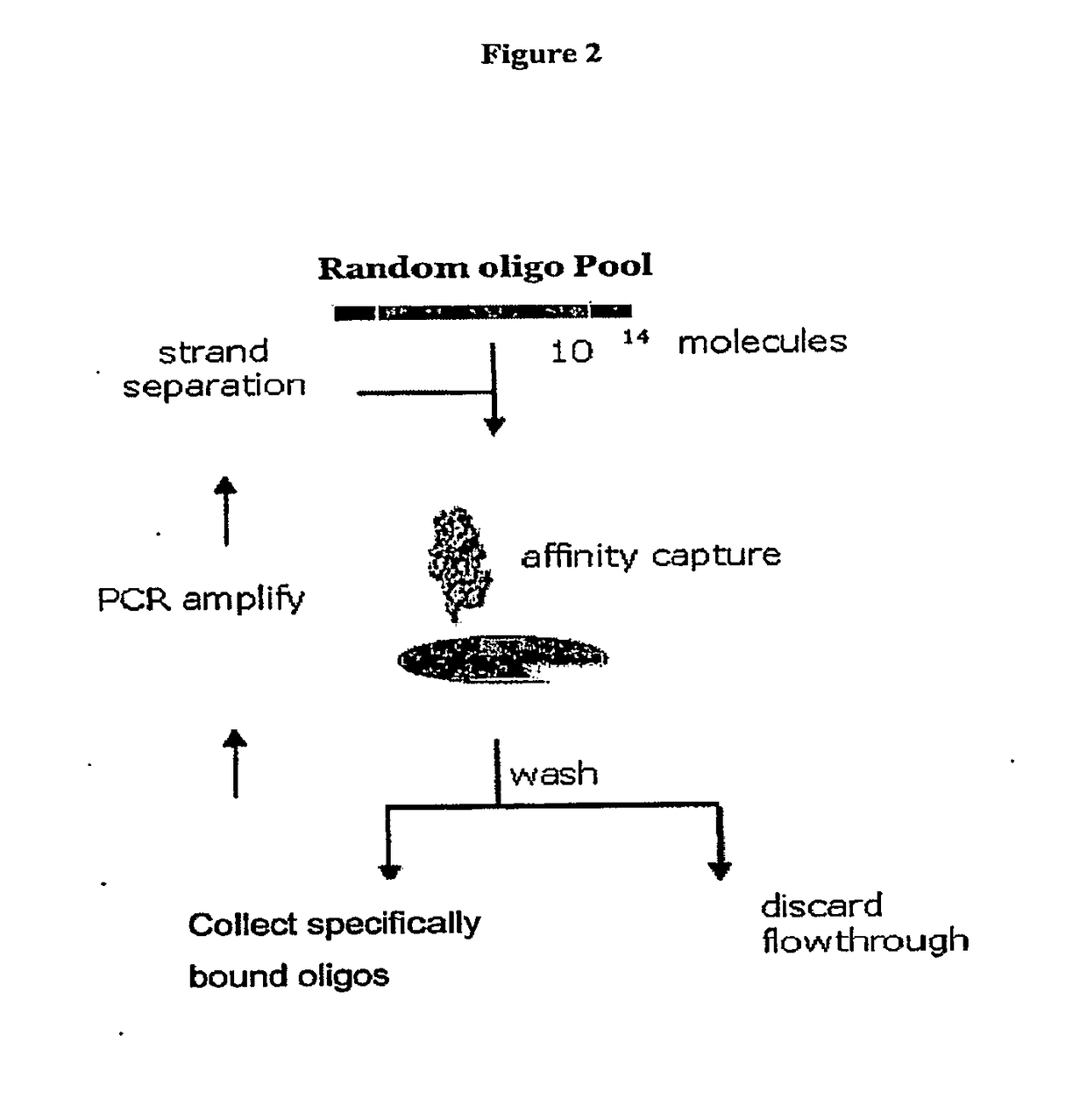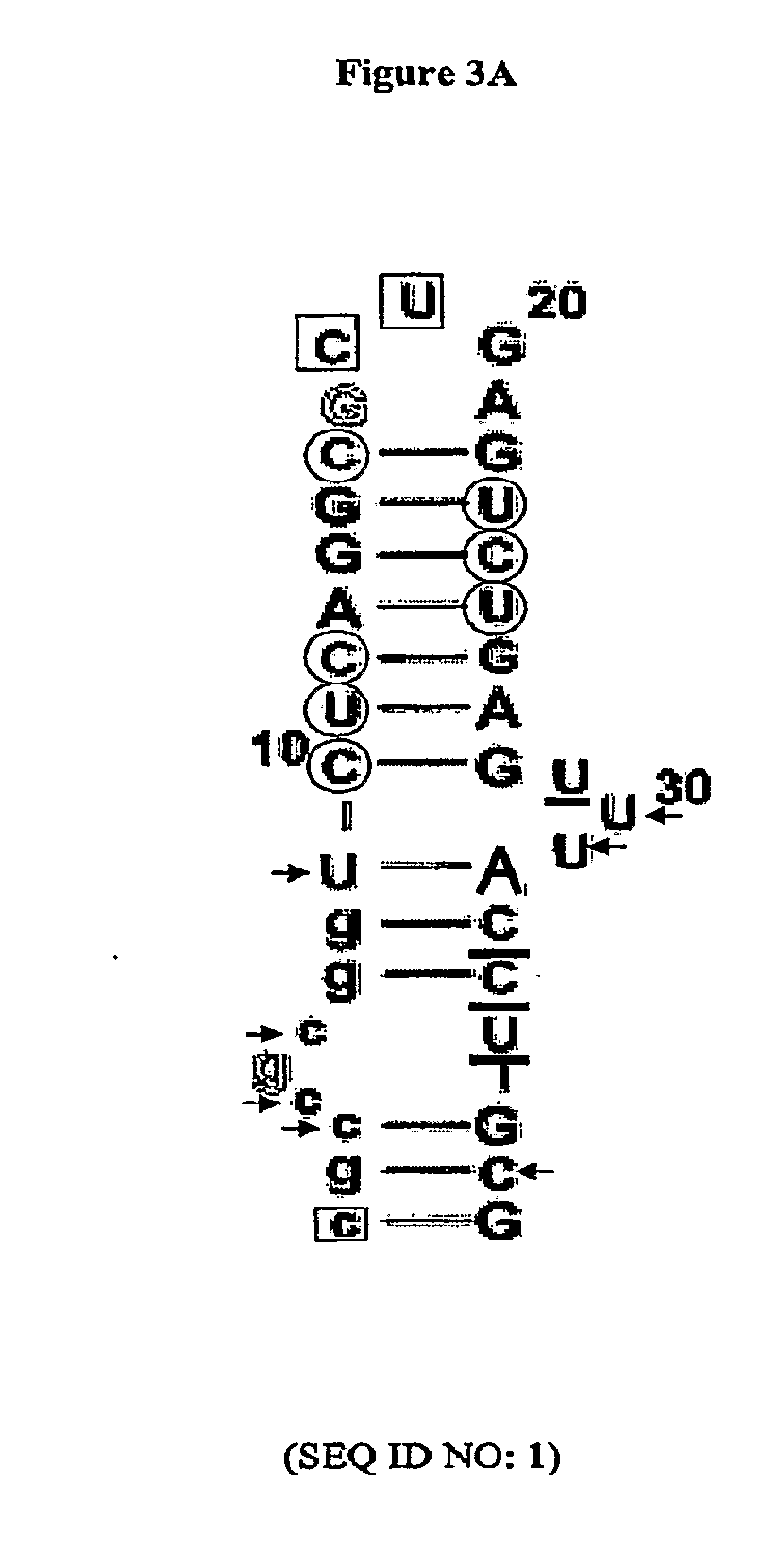Complement Binding Aptamers and Anti-C5 Agents Useful in the Treatment of Ocular Disorders
a technology of complement binding aptamers and anti-c5 agents, which is applied in the field of nucleic acids, can solve the problems of limiting the availability of some biologics, difficult to elicit antibodies to aptamers, and severe limitations, and achieve the same level of drusen, stabilize the progression of geographic atrophy, and the effect of the same level of geographic atrophy
- Summary
- Abstract
- Description
- Claims
- Application Information
AI Technical Summary
Benefits of technology
Problems solved by technology
Method used
Image
Examples
example 1
Anti-C5 Aptamer Activity in the Classical and Alternative Complement Pathways
example 1a
[0454]The CH50 test measures the ability of the complement system in a serum test sample to lyse 50% of cells in a standardized suspension of antibody-coated sheep erythrocytes. A solution of 0.2% human serum was mixed with antibody-coated sheep erythrocytes (Diamedix EZ Complement CH50 Kit, Diamedix Corp., Miami, Fla.) in the presence or absence of various anti-C5 aptamers. The assay was run according to the kit protocol in veronal-buffered saline containing calcium, magnesium and 1% gelatin (GVB++ complement buffer) and incubated for 30 minutes at 37° C. After incubation, the samples were centrifuged to pellet intact erythrocytes. The optical density at 412 nm (OD412) of the supernatant was read to quantify the release of soluble hemoglobin, which is proportional to the extent of hemolysis (Green et al., (1995) Chem. Biol. 2:683-95). To verify that the aptamers blocked C5 activation, some hemolysis supernatants were analyzed for the presence of C5a and C5b-9 by ELISA (C5b-9 E...
example 1b
d Assay
[0473]The effect of the anti-C5 aptamer on the alternative pathway of the complement system was analyzed using the following whole blood assay. In the absence of an anticoagulant, blood was drawn from normal human volunteers. Aliquots of blood (containing no anti-coagulant) were incubated with increasing concentrations of ARC186 (SEQ ID NO: 4) for 5 hours at room temperature or 37° C. Samples were centrifuged to isolate serum and the presence of C5b in the serum was detected by sC5b-9 ELISA (C5b-9 ELISA kit, Quidel, San Diego, Calif.). As shown in FIG. 15, the anti-complement activity, as reflected in production of C5b-9, between samples incubated at different temperatures diverged at 3 μM. The room temperature data indicated that the concentration of aptamer required for quantitative inhibition is in the range of 3-6 μM, whereas the reported concentration of C5 is approximately 400 nM. These results suggest that greater than 10-fold molar excess of anti-C5 aptamer (ARC186; S...
PUM
| Property | Measurement | Unit |
|---|---|---|
| molecular weight | aaaaa | aaaaa |
| solubility | aaaaa | aaaaa |
| volume | aaaaa | aaaaa |
Abstract
Description
Claims
Application Information
 Login to View More
Login to View More - R&D
- Intellectual Property
- Life Sciences
- Materials
- Tech Scout
- Unparalleled Data Quality
- Higher Quality Content
- 60% Fewer Hallucinations
Browse by: Latest US Patents, China's latest patents, Technical Efficacy Thesaurus, Application Domain, Technology Topic, Popular Technical Reports.
© 2025 PatSnap. All rights reserved.Legal|Privacy policy|Modern Slavery Act Transparency Statement|Sitemap|About US| Contact US: help@patsnap.com



